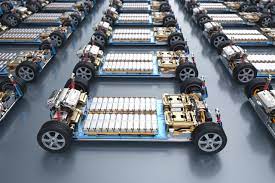Lithium-ion (Li-ion) batteries have become a cornerstone in the transition towards renewable energy, playing a pivotal role in integrating solar, wind, and other renewable sources into the energy grid. Their unique properties offer solutions to some of the most significant challenges faced by renewable energy, particularly in terms of variability, storage, and distribution. This article delves into how lithium-ion batteries are impacting the integration of renewable energy, highlighting the transformative effects they have on energy systems worldwide.

Bridging the Gap Between Supply and Demand
One of the primary challenges with renewable energy sources like solar and wind is their intermittent nature. Energy production from these sources doesn’t always align with consumption patterns, leading to periods of surplus and shortage. Lithium-ion batteries address this issue by storing excess energy generated during peak production times and releasing it when demand is higher than current production. This capability not only stabilizes the grid but also increases the share of renewable energy that can be utilized in the energy mix.
Enhancing Grid Stability and Reliability
Grid stability is crucial for the consistent delivery of electricity to consumers. Variations in energy production from renewables can lead to frequency and voltage fluctuations, which can compromise grid stability. Li-ion batteries can respond rapidly to these changes, providing ancillary services such as frequency regulation and voltage support. Their fast response times are essential for maintaining grid stability in systems with high levels of renewable penetration.
Facilitating Distributed Energy Systems
Lithium-ion batteries are integral to the development of distributed energy systems, where energy generation occurs closer to the point of consumption. These systems can reduce transmission losses and alleviate grid congestion. By pairing lithium-ion batteries with local renewable energy sources, communities can achieve greater energy independence, reduce energy costs, and enhance resilience against grid outages.
Supporting the Electrification of Transportation
The electrification of transportation is another area where lithium-ion batteries are making a significant impact. Electric vehicles (EVs), powered by Li-ion batteries, not only reduce greenhouse gas emissions but can also act as mobile energy storage units. Through vehicle-to-grid (V2G) technologies, EVs can feed energy back into the grid during peak demand times, further supporting the integration of renewable energy sources.
Driving Economic Viability
The declining costs of lithium-ion batteries have been crucial in enhancing the economic viability of renewable energy projects. As battery technologies advance and economies of scale are achieved, the costs of energy storage continue to fall, making renewable energy projects more competitive with traditional fossil fuel-based sources. This economic shift is accelerating the adoption of renewables and contributing to a more sustainable and diversified energy portfolio.
Challenges and Opportunities
While the impact of lithium-ion batteries on renewable energy integration is overwhelmingly positive, challenges remain. These include the sustainability of lithium sourcing, battery lifespan and performance over time, and the environmental impact of battery disposal. Addressing these challenges requires ongoing research and development into alternative materials, recycling technologies, and next-generation battery technologies such as solid-state batteries.
Conclusion
Lithium-ion batteries are a key enabler of renewable energy integration, offering solutions to some of the most significant challenges associated with solar and wind energy. By providing efficient energy storage and enhancing grid stability, Li-ion batteries facilitate a smoother transition to a more sustainable, reliable, and efficient energy system. As technology progresses and the global community continues to prioritize renewable energy, the role of lithium-ion batteries in this transition will only grow in importance, driving forward the clean energy revolution.
